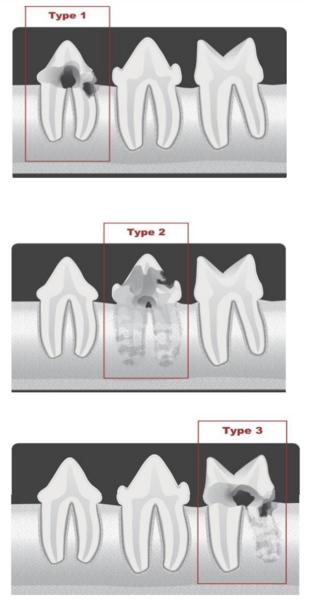Feline Oral Resorptive Lesions in Cats
Tooth resorption, formerly known as feline odontoclastic resorptive lesion (FORL), is a condition where the dentin (a hard tissue that lies beneath the enamel) of the tooth erodes and becomes irreparably destroyed over time. As time passes, all areas of an affected tooth may become affected.
It is a common condition affecting 20-60% of all cats, where 75% of cats aged five years or above are affected. Affected cats typically have more than one tooth involved. The cause for tooth resorption is unknown. There are numerous theories regarding its cause, but none have been confirmed. The most commonly affected teeth are the premolars and molars (cheek teeth) of the mandible, and canines. It is a progressive disease, with no known treatment or prevention. Tooth resorption is a dental disease that is difficult to diagnose by clinical exam, as 50% of affected cats display no obvious lesions clinically on oral examination, and require dental radiographs to reveal the affected tooth.

©2019 Veterinary Information Network(VIN), illustration by Tamara Rees.

There are two specific types of tooth resorption which can be classified based on radiographic appearance of the tooth root.
With Type 1 tooth resorptions, there is destruction of the crown, but radiographically, the root retains a normal appearance with an easily discernible periodontal ligament.
With Type 2 tooth resorptions, radiographically the root appears to be disintegrating and not easily discernible from bone. This is referred to as replacement resorption.
Type 3 tooth resorptions has properties of type 1 lesions on one root and type 2 lesions on the other.

Progression of tooth resorption (https://avdc.org/avdc-nomenclature/)
What clinical signs to look out for?
- Swallowing food without chewing
- Developing a preference for soft food
- Tilting the head and trying to chew on just one side of its mouth
- Food falling out of the mouth
- Pawing at mouth
- Tooth grinding
- Majority of cats affected by this condition show no outward signs of discomfort, despite tooth resorption being a painful condition.
Remember, the condition has to get to an extreme level before the cat stops eating due to significant pain. The lack of these signs should not be misconstrued as evidence that they are not painful. Cats are very good at hiding signs of pain!
So, how do I know for sure? And how can we address it?
The only way to diagnose tooth resorption, is to perform a full-mouth intraoral radiograph under general anaesthetic. A thorough oral examination which includes tactile exploration with a dental explorer, will help us identify the lesions. As this is a progressive disease which will eventually affect the whole tooth, the only effective treatment is extraction of any affected teeth and pain management.


